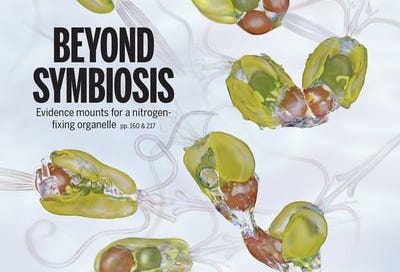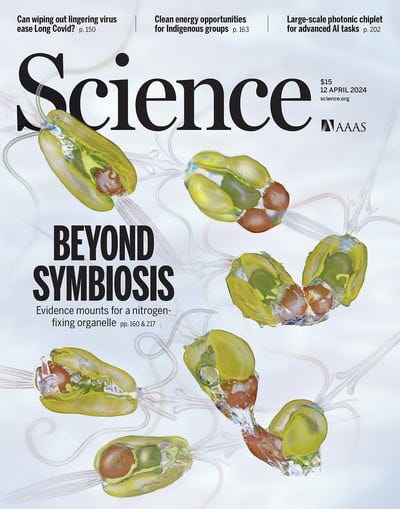A New Organelle: the Nitrogen-fixing Nitroplast
An advanced stage symbiosis captures early formation of a new organelle
Subscribe to Genomely for the latest discoveries and in-depth analyses in your inbox.
Thank you to our subscribers for your continued support and passion for science!
Symbiosis is present across life and biomes. Coale et al., in their groundbreaking study that was featured on the cover of Science magazine, may have found an entirely new cellular structure: the nitroplast. This potential organelle, derived from an endosymbiotic relationship between a marine alga and a nitrogen-fixing cyanobacterium, has profound implications for how organelles – like the mitochondria – evolve.
The Significance of Symbiotic Relationships
Symbiotic interactions are fundamental to the evolutionary history of life forms on our planet. The development of mitochondria and chloroplasts, now critical organelles within eukaryotic cells, originated from such intimate partnerships. These organelles transformed their host cells with photosynthesis and aerobic respiration capabilities, essential for energy production in most eukaryotes. Similarly, biological nitrogen fixation – the conversion of atmospheric nitrogen to ammonia – is a vital process traditionally known to be carried out only by certain bacteria and archaea. This process is critical for maintaining the fertility of ecosystems, as fixed nitrogen is a crucial nutrient for many organisms.
Candidatus Atelocyanobacterium thalassa: A Step Beyond Endosymbiosis

In the quest to understand these complex relationships, Candidatus Atelocyanobacterium thalassa, or UCYN-A, is a particularly fascinating subject. It has integrated so closely with its host that it behaves less like a separate entity and more like a part of the host cell – a characteristic feature of an organelle. Coale et al. utilized soft X-ray tomography to reveal the intimate physical integration and synchronous division of UCYN-A with the algal cell’s organelles, suggesting a connection that blurs the lines between symbiont and organelle.
Protein Sharing: A Marker of Integration
One of the most compelling pieces of evidence for the organelle-like status of UCYN-A is its protein import system. The study showed that many proteins found in UCYN-A are encoded by the marine host algae, Braarudosphaera bigelowii, genome and targeted explicitly to UCYN-A. This finding is crucial because one of the hallmarks of an organelle is its reliance on the host cell for the supply of essential proteins. In UCYN-A, these imported proteins play critical roles in nitrogen fixation and other cellular processes during the light cycle when photosynthesis provides the energy needed for nitrogen fixation.
Evolutionary and Ecological Implications
Transitioning from an endosymbiotic relationship to a fully integrated organelle is a rare and significant event in evolutionary biology. The UCYN-A system provides a unique model to study these processes in real-time. Furthermore, understanding this relationship enhances our knowledge of marine nitrogen cycles, which is essential for global ecosystem functioning. The ocean's health and productivity depend significantly on nitrogen availability, which influences carbon cycling and climate regulation.
Future Prospects and Applications
The evolution of a nitrogen-fixing organelle like the nitroplast could have profound implications. If such organelles could be developed or engineered in other organisms, particularly crops, it could revolutionize our approach to fertilization and crop production, reducing dependency on synthetic nitrogen fertilizers, which are environmentally costly. The study by Coale et al. not only advances our understanding of cellular evolution but also opens new avenues for biotechnological applications that could address some of the pressing environmental challenges of our time.
Reference: Coale et al. Nitrogen-fixing organelle in a marine alga. DOI: 10.1126/science.adk1075. https://www.science.org/doi/10.1126/science.adk1075





